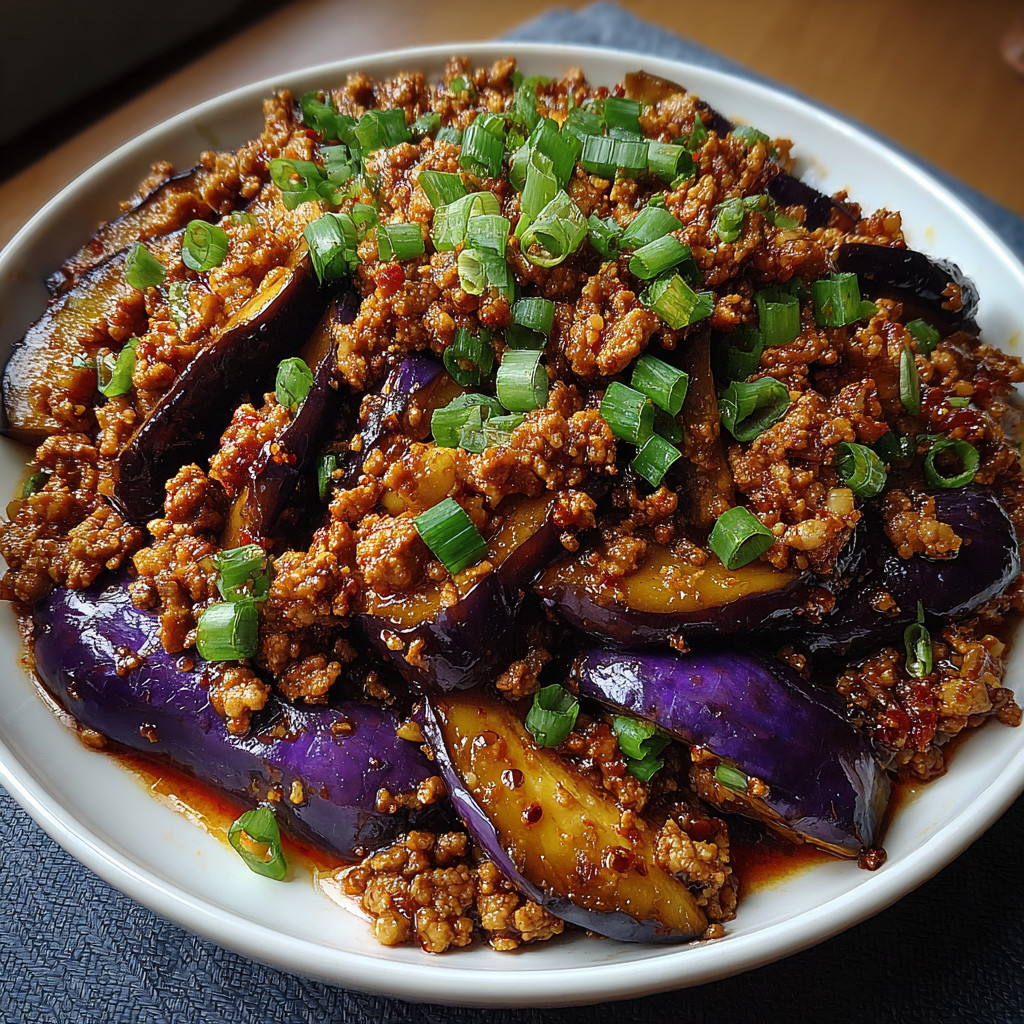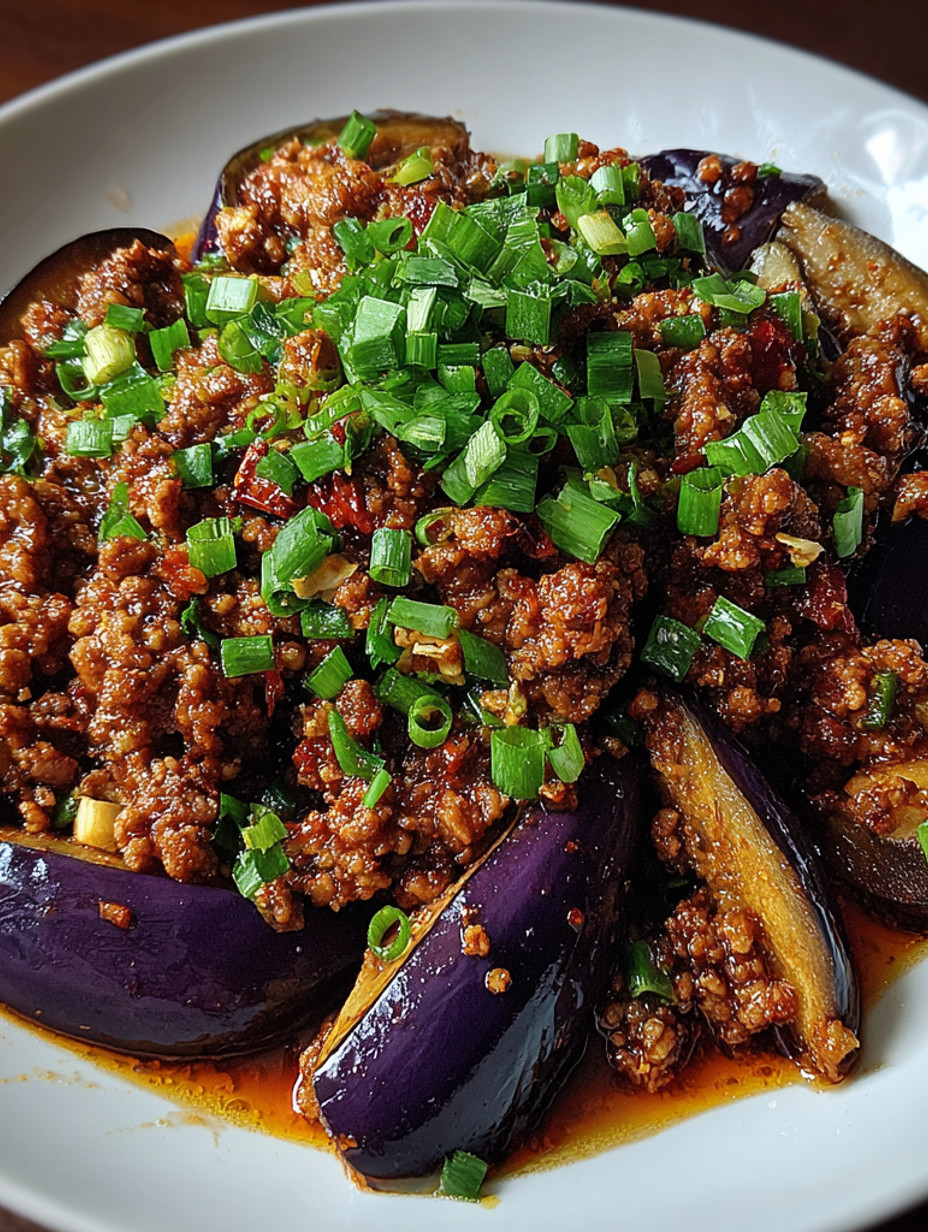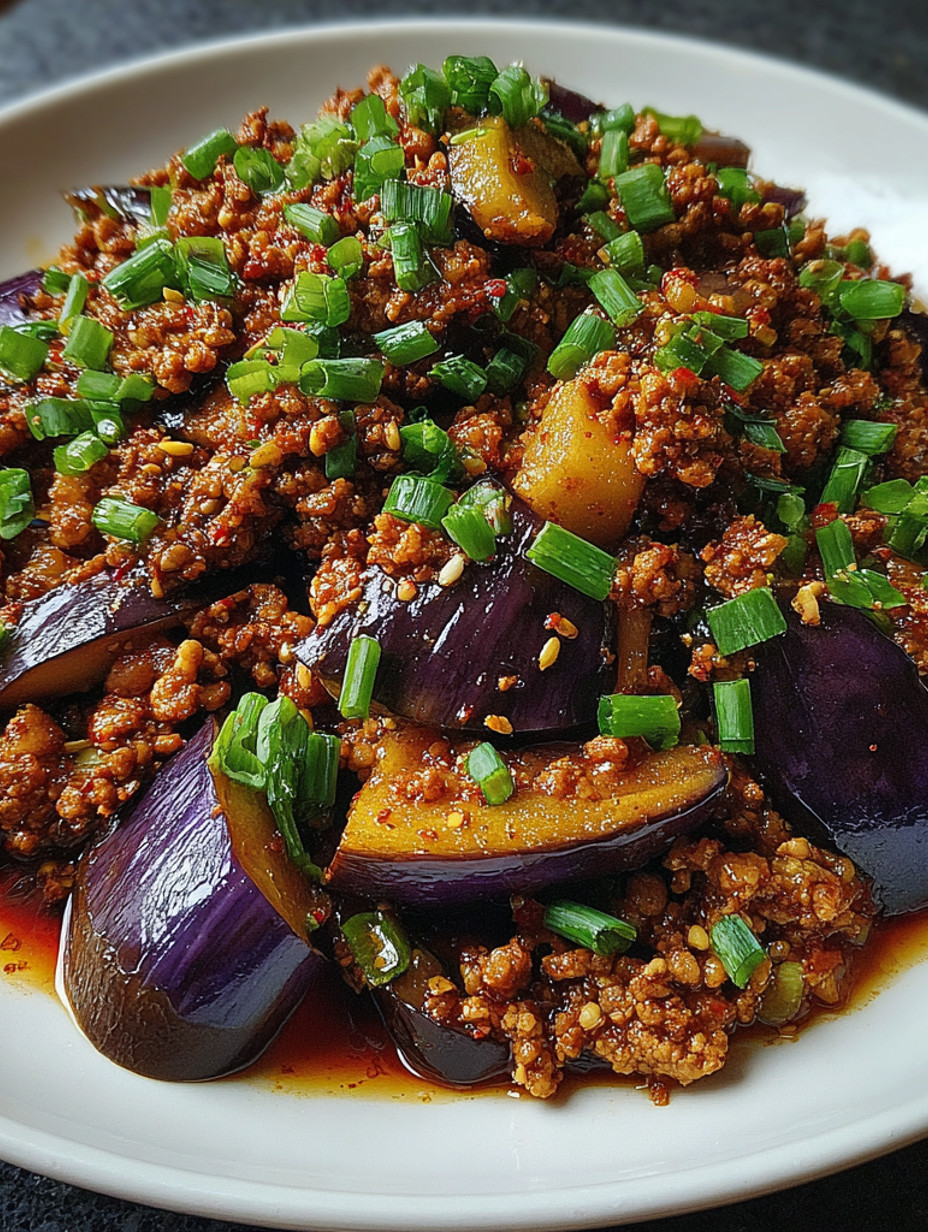 Bookmark
Bookmark
This boldly flavored Sichuan stir fry is all about transforming eggplant into something rich spicy and deeply comforting. It blends savory minced meat with fiery bean paste and fragrant aromatics for a dish that always impresses. Every time I make it the kitchen fills with that unmistakable Sichuan aroma and it feels like a warm hug from a busy street kitchen in Chengdu.
The first time I cooked this I served it to skeptical friends who claimed they did not like eggplant. There was not a single bite left by the end of the night.
Ingredients
- Eggplants: look for glossy smooth skin and firm feel smaller ones soak up less oil and fry better
- Minced meat: pork or chicken gives great texture and absorbs flavor easily turkey also works well
- Spring onions: trim away wilted parts and keep only bright fresh greens for garnish
- Garlic: use fresh cloves rather than pre chopped for best aroma and depth
- Ginger: choose heavy juicy roots with tight skin and strong fragrance
- Spicy bean paste: the key to Sichuan heat try to get doubanjiang from a Chinese market
- Oyster sauce: adds deep savory notes opt for high quality brands
- Sugar: balances the heat and enhances eggplant sweetness use white or light brown
- Shaoxing wine: brings mild acidity and depth dry sherry is an okay substitute
- Sesame oil: finish with a touch of pure toasted sesame oil for aroma
- Cornstarch: helps control oil absorption and keeps eggplant tender inside
Step-by-Step Instructions
- Prepare the Eggplant:
- Cut eggplant into even two inch chunks and lightly dust with cornstarch. This keeps them from becoming greasy. Heat oil in a wok or deep pan and fry in small batches. Let them turn golden and drain on paper towels to keep their creamy interior.
- Brown the Meat:
- Pour off most of the frying oil. Add minced meat to the hot pan and break it apart. Cook over medium heat until no pink remains and the texture becomes crumbly.
- Build the Base:
- Lower the heat and stir in spicy bean paste. Keep cooking until red oil surfaces and the aroma becomes intense. This builds the signature flavor foundation.
- Add Aromatics and Sauce:
- Stir in ginger and garlic until just golden and fragrant. Raise the heat and quickly add oyster sauce sugar and Shaoxing wine. Toss everything together as the liquid sizzles and coats the meat.
- Combine and Simmer:
- Return fried eggplant to the wok. Gently fold into the sauce and simmer for two to three minutes. Let the flavors meld and the sauce cling to the eggplant.
- Finish and Serve:
- Turn off the heat. Add chopped spring onions and a swirl of sesame oil. Stir gently and serve immediately while hot and glossy.
 Bookmark
Bookmark
Storage Tips
Let leftovers cool then store in an airtight container in the fridge for up to three days. To reheat warm gently in a pan with a splash of water to revive the sauce and texture. Avoid freezing as it can make the eggplant mushy.
Ingredient Substitutions
No spicy bean paste Use a blend of chili crisp and miso for similar complexity. Oyster sauce can be replaced with mushroom based stir fry sauce for a plant based option. Swap pork with turkey or even extra eggplant for a vegetarian approach.
Serving Suggestions
Serve with steamed jasmine rice to catch every bit of glossy sauce. It pairs beautifully with crisp cucumber salad or sautéed greens like bok choy. Leftovers also make an amazing wrap with fresh herbs and a spoon of chili sauce.
 Bookmark
Bookmark
Cultural Context
Eggplant stir fry is a beloved comfort dish across many Chinese homes especially in Sichuan cuisine which leans into spicy and fermented flavors. Though this version simplifies the method it honors the classic balance of heat savory depth and aroma.
Frequently Asked Questions About Recipes
- → Can I use ground chicken instead of pork?
Yes, ground chicken or even beef provide great alternatives for the minced meat, adapting well to the flavors in this dish.
- → How do I prevent eggplant from soaking too much oil?
Coating eggplant slices lightly with cornstarch before frying will help reduce oil absorption while keeping the texture crisp.
- → Is it possible to make this vegetarian?
You can easily omit the mince meat or substitute it with firm tofu or plant-based mince for a vegetarian version.
- → What makes the flavor profile distinctively Sichuan?
The use of spicy bean paste, ginger, garlic, and Shaoxing wine creates the robust, aromatic, and mildly spicy notes typical of Sichuan cuisine.
- → Can I adjust the spice level?
Certainly! Reduce the amount of spicy bean paste for milder results or add dried chili for extra heat.
